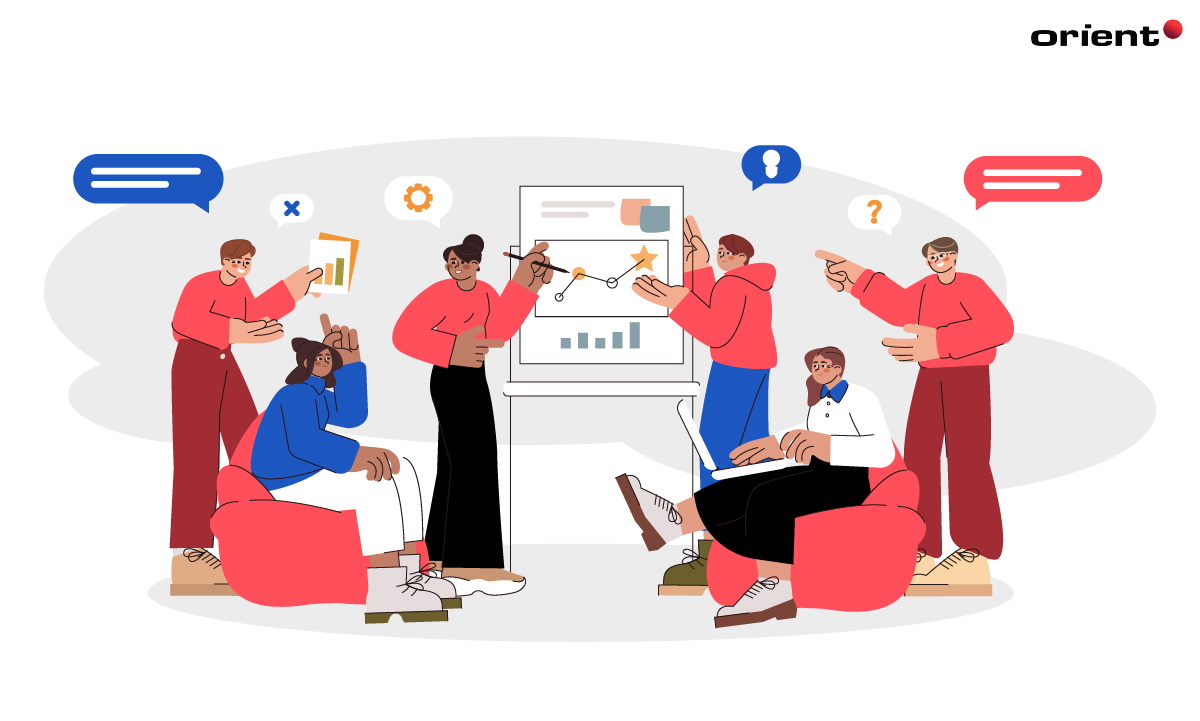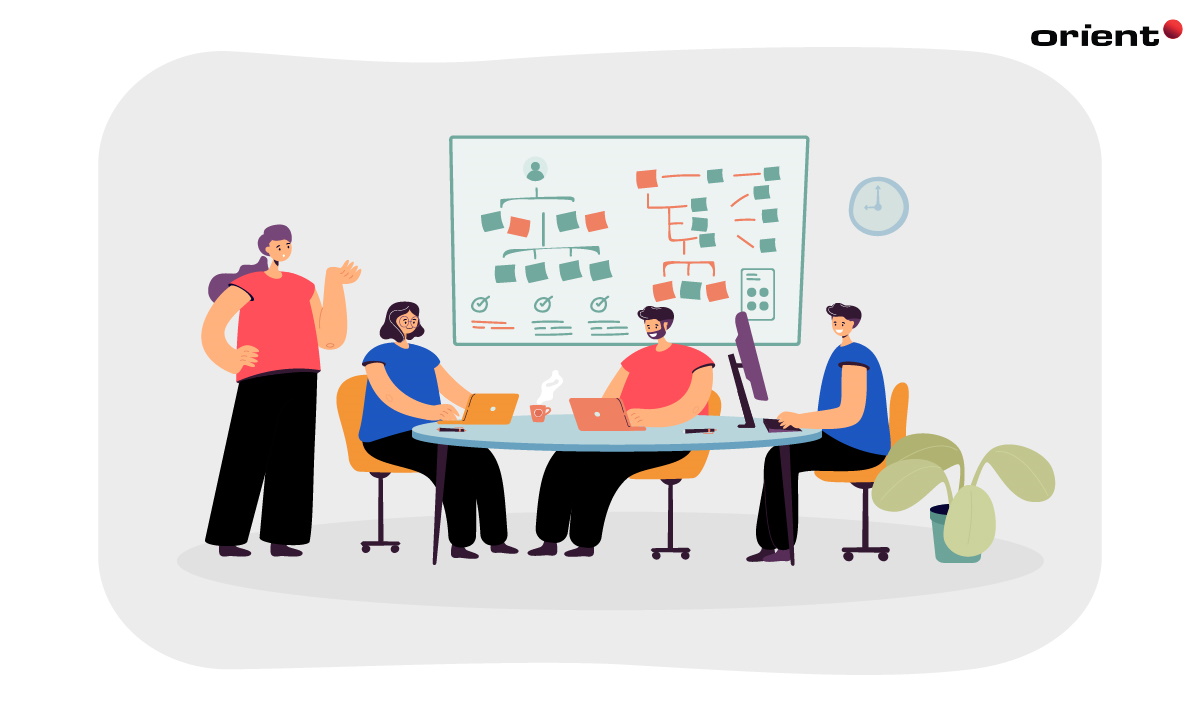Key Roles that Contribute to the Success of a Software Development Project

Content Map
More chaptersDeveloping new software is a big task. So, it makes sense that assembling a development team, one with people who bring a wide range of skills, knowledge, and expertise to the table, can also be a challenge. This is because no two software development projects are alike. While having a certain mix of people may work well for one project, the same may not be true for another. This is why it is so important that software development teams assemble the right people for the right job. Otherwise, they risk hiring people whose skills do not align with the project requirements, resulting in a worse experience for the development team and the client. By far, one of the best ways to hire a software development team is to better understand the most common software development team roles and responsibilities. And sure, while no two development projects are alike, there are select roles that exist in pretty much all development teams, regardless of the project scope or software being made.
Agile vs Waterfall Teams
Before you learn about the most common roles in software development, though, you need to understand the difference between Agile and Waterfall teams. Agile teams are teams that embrace the Agile methodology, an approach to software development that encourages cross-department collaboration, self-management, continuous feedback and testing, and fluidly responding to project changes. Waterfall teams, on the other hand, adopt a more traditional approach to software development, where the team has a strict hierarchy of staff, and the project follows a fixed, linear progression from beginning to end with little room for change.
What this means is, Agile teams and Waterfall teams have slightly different approaches to how they assign roles, job titles, and responsibilities. Agile roles tend to be more flexible, they cover a wider range of skills under one role, and there tends to be more crossover between roles. This makes it easier for individuals to collaborate with each other, share ideas, and work together to reach unified goals.
As an example, an Agile Team Leader may also be a Scrum Master – that being, a person who is responsible for the sharing of information between team members, while facilitating the deployment of Agile practices – but a Waterfall Team Leader is just that … a Team Leader. Agile teams also tend to incorporate multiple roles under one department, so as to promote collaboration across slightly different but still similar departments. By doing so, Agile teams have more opportunities to adapt quickly, respond to last-minute changes, and deliver continuous value to customers and shareholders over time.
Common Software Development Roles and Responsibilities
Now that you understand the difference between Agile and Waterfall teams, let’s take a look at some of the most common team roles and responsibilities in software development.
Project Manager
The project manager is responsible for the planning, budgeting, developing, organizing, and delivery of a software development project. They create roles and assign suitably skilled staff to those roles based on client requirements. They create contracts and estimate the budget and timeline. They also perform a risk analysis and propose viable solutions to avoid disruption, as well as respond to any changes in delivery.
In Agile teams: Project managers assume less of a leadership role and more of a collaborative role, where they manage the sharing of information between departments, foster continuous feedback and improvement, clear potential roadblocks, and help the team master new tools, workflows, and frameworks.
Product Owner
Product owners are intimately familiar with the product, its features, its benefits, its target audience, and how best to deliver a positive user experience. They understand the client’s needs and the needs of their target audience, which they then communicate to the rest of the team, so that the team knows how to develop the product in a way that satisfies the client’s requirements. Furthermore, the product owner uses their creativity and analytical skills to respond to project changes, such as a change in market trends or a change in user expectations.
In Agile teams: Product owners are responsible for maximizing the potential of the product, the value it provides to the business, and the vision that the client has in mind. To achieve this, they define the client’s vision, create a product backlog (a to-do list for the development team, one that, in an Agile environment, is not static, but constantly updated as a live document based on the evolving project needs), and then guide the development team through the backlog, from start to end.
Team Leader
Team leaders are responsible for leading the team, while providing them with the necessary resources they need to overcome design, programming, and development challenges. They coordinate the efforts of the entire team to ensure they achieve the same unified goals. They may assist with writing some code, just like a software developer, but their role is more of a strategic and leadership one, where they make sure the team is all on the same page, working towards the same goals, and prioritizing the right tasks at the right time.
In Agile teams: Team leaders give the rest of the team the necessary skills, knowledge, and resources to be independent and self-manage themselves, instead of being responsible for and micro-managing every little thing that the team does. They still serve as a single, reliable point of reference, particularly when things get tough, but they provide more of a mentoring and coaching service, empowering the team to self-optimize their tasks.
Tech Leader
Tech leaders define the technical requirements for a software project. They take the time to understand the client’s vision, propose the best technology stack (i.e. tools, frameworks, programming languages, libraries, databases) for that vision, and then communicate the technical requirements to the development team for them to follow. Tech leaders are also usually the first to respond to technical blocks and prioritize technical debt tasks.
In Agile teams: Tech leaders collaborate with product owners, making sure the backlog is correctly derived from the technology stack; with Designers, to receive high-quality designs for the development team to implement; and with Operations, to make sure the development team has the right hardware for the job. Agile tech leaders also respond swiftly to technical changes, making sure the new technical requirements match the change in project scope.
How Do These Above Four Roles Fit Together?
Agile teams are structured in a way that enables them to respond quickly to project changes, perform multiple functions, and self-manage themselves in a more effective way than a traditional team structure. Each of the above four roles plays an important part in the success of the Agile methodology, and the importance of each role depends on the type and size of the team.
For example, while a Team Leader (or Scrum Master) may be crucial in developing and nurturing a newly established team, over time, as that very team becomes comfortable with each other and completes multiple projects, they will get better at self-managing themselves, communicating with one another, and adapting to new project requirements. Alternatively, the Scrum master’s role may change over time, or they may move on to mentor other newly established teams.
For these reasons, it is important that any Agile team assigns the above four roles to suitably skilled team members. Different teams may assign those roles in different ways, but these core roles should be present in any Agile team, even for very small projects. Other stakeholders, such as salespeople, legal staff, operations, and end users, may also work outside of the core Agile team to contribute to the project.
Software Developer
Software developers write the code that enables the software product to function. They implement the technology outlined by the tech leader, write the code, and then implement continuous changes and improvements in line with feedback from the rest of the team, including the UX/UI Designers, Product Owner, Project Manager, and the client of course. The roles and responsibilities of a software development team are split into two categories; front-end developers, who focus on everything the user sees and interacts with, and back-end developers, who are responsible for the processes and functionalities that the user does not see.
In Agile teams: Software developers work in tandem with other departments, as opposed to alone, siloed, so that team feedback is implemented gradually, in stages, instead of being tacked on at the last minute when the deadline is creeping up. In an Agile environment, software developers work under the Scrum system, where they work in bursts to quickly implement new features and improvements in stages, so as to deliver continued value to customers and clients, even after the software launches.
UI/UX Designer
UI (User Interface) designers focus on designing functional, user-friendly, and visually appealing interfaces that best meet the expectations of the target audience. They create visual touch points that the end user can easily identify, respond to, and achieve a particular outcome from. This involves designing various visual elements, such as sliders and buttons and fonts and animations, which make it easier for the end user to know where to go and what to do.
UX (User Experience) designers have a more abstract role. Their goal is to focus on the way in which the end user will interact with a software product. This focus extends to every aspect of the user experience, from the way that they may log in, interact with a menu, fill out a form, interpret the meaning of a specific graphic or block of text, and upload or download a file. They also strive to identify all the potential pain points that a user may experience along the way, and then come up with solutions to resolve those pain points – before they have a chance to be part of the software.
In Agile teams: UI and UX designers work closely to form a roadmap of the user experience, come up with various prototypes, dissect the pros and cons of those prototypes – with client feedback – and then push forward with the best solution. On top of this, User Design and User Experience changes are implemented gradually, in an iterative approach, as opposed to at the very last minute.
Quality Assurance (QA)
The QA team assesses the quality of the methods, processes, and procedures being used to create the software product. They evaluate the execution of the processes and propose more streamlined, cost-effective, and efficient ways to complete tasks, saving the team time and money and resources, while providing better value to the client. They also make sure the team is complying with relevant company guidelines (i.e. programming standards) and industry-specific and global software development standards.
In Agile teams: QA helps proactively identify issues before they creep into development. This helps save time on development and reduce the burden on the testers, as they have fewer bugs and errors to identify and report. In Agile, QA works more closely with developers, helping them avoid making programming decisions that may inhibit the project at a later time.
Choosing a Trusted Software Development Team

These are the most common roles and responsibilities of a software development team. While there may be variations to the team structure, in general, these are the roles and responsibilities that are essential to the success of a software development project.
When approaching a software development team, it is worth asking what roles they have, what functions and responsibilities they fulfil, and how those responsibilities contribute to the development process and the quality of the final software product. Any reputable software development company will be open, upfront, and transparent about their team structure, and how their approach can help you, the client, achieve the best possible outcome.







